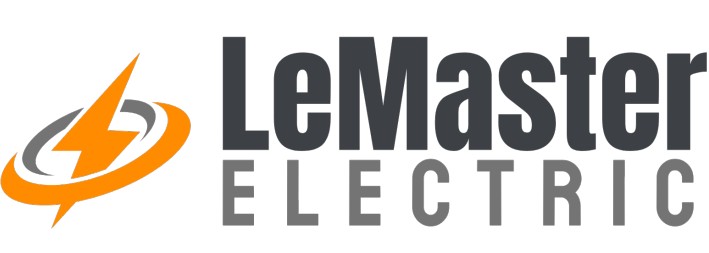Best Practices
Inspection Trends & Common Violations: What Commercial Projects in Washington Need to Know

Introduction
Every commercial electrical project in Washington must pass inspection before it can move forward. Inspectors check that the work meets both the National Electrical Code (NEC) and Washington’s own rules under WAC 296-46B.
The truth is: even experienced contractors get flagged for mistakes. These violations are rarely intentional — but they cost time, money, and credibility with owners and general contractors.
Here are the most common violations inspectors report in Washington, explained in plain English with real-life examples, and how LeMaster Electric prevents them.
Common Violation #1: Inadequate Working Clearances
What It Means:Electrical panels, switchgear, and service equipment need open space around them so workers can safely access and maintain the equipment. The NEC typically requires three feet of clear space in front of panels.
Real-Life Scenario:In a retail tenant improvement, the contractor installs a panel in a storage closet. After the tenant moves in, boxes get stacked in front of the panel. When the inspector returns, the project fails inspection because the equipment isn’t safely accessible.
Why It Matters:Without proper clearance, electricians can’t safely test or repair equipment — and in an emergency, responders may not be able to cut power quickly.
Common Violation #2: Missing or Incorrect Labeling
What It Means:Every circuit breaker, disconnect, or piece of electrical equipment must be labeled to show what it controls.
Real-Life Scenario:In a medical office build-out, the contractor labels a breaker panel simply as “Outlets.” When the inspector asks which outlets, no one can tell. The project fails inspection and the contractor must relabel the entire system.
Why It Matters:Clear labeling is critical for safety. If a breaker trips or a circuit needs to be shut down quickly, the label must tell workers exactly what’s affected.
Common Violation #3: Improper Grounding and Bonding
What It Means:
Grounding ensures that if a fault occurs, electricity flows safely into the earth.
Bonding connects all metal parts of the electrical system so they are at the same electrical level.
Real-Life Scenario:In a warehouse expansion, the contractor forgets to bond the metal conduits to the grounding system. During inspection, this gets flagged as unsafe because a worker could be shocked if the conduit accidentally carried electricity.
Why It Matters:Grounding and bonding violations are serious safety hazards. They’re also one of the most common reasons inspectors fail projects.
Common Violation #4: Not Following Manufacturer Instructions
What It Means:Electrical equipment must be installed according to the manufacturer’s instructions — not just the NEC.
Real-Life Scenario:A contractor installs a panelboard but skips the manufacturer’s required torque settings for the lugs (the connection points for wires). During inspection, the inspector asks for proof and the contractor can’t provide it. The project is failed until it’s corrected.
Why It Matters:Even if the work looks neat, skipping the instructions means the system might not perform safely under load.
Common Violation #5: Outdated or Expired Permits
What It Means:Electrical permits must be current. If work is delayed and a permit expires, inspectors cannot approve the job.
Real-Life Scenario:A commercial build-out gets delayed due to supply chain issues. The electrical permit expires without anyone noticing. The contractor must purchase a new permit and reschedule inspections, causing weeks of delay.
Why It Matters:Expired permits slow projects and add unexpected costs.
How Contractors and Property Managers Can Stay Ahead
Plan for Clearance Early: Leave space around panels in the design — don’t squeeze them into closets.
Take Labeling Seriously: Use clear, specific labels for every circuit.
Double-Check Grounding and Bonding: Train crews to verify connections before inspection.
Follow the Book: Install equipment exactly as the manufacturer requires.
Track Permits Closely: Build permit timelines into project schedules.
Why Work with LeMaster Electric?
At LeMaster Electric, inspections are not an afterthought — they’re part of our process from day one. We:
Review drawings for code and clearance issues before construction.
Label and document systems clearly so inspectors and clients can understand them.
Train our electricians on grounding, bonding, and manufacturer requirements.
Keep permit deadlines on our internal schedule to prevent expiration.
Our goal is simple: to help clients avoid the common pitfalls that derail projects.
Conclusion
Failed inspections are costly, frustrating, and avoidable. The most common violations — lack of clearance, poor labeling, improper bonding, ignoring instructions, or expired permits — all come down to planning, communication, and compliance.
By partnering with LeMaster Electric, you gain a contractor who not only knows the rules but also builds processes to prevent these mistakes from happening in the first place. That means fewer delays, safer buildings, and more predictable project outcomes.
Recent posts
EV Charging Infrastructure: A Market Built to Withstand Slowdowns
The electric vehicle (EV) industry is moving through economic cycles like every other sector—but unlike most, EV infrastructure isn’t slowing down. The installation of commercial charging stations continues to expand across the United States, backed by long-term policy, fleet electrification, and corporate investment.




